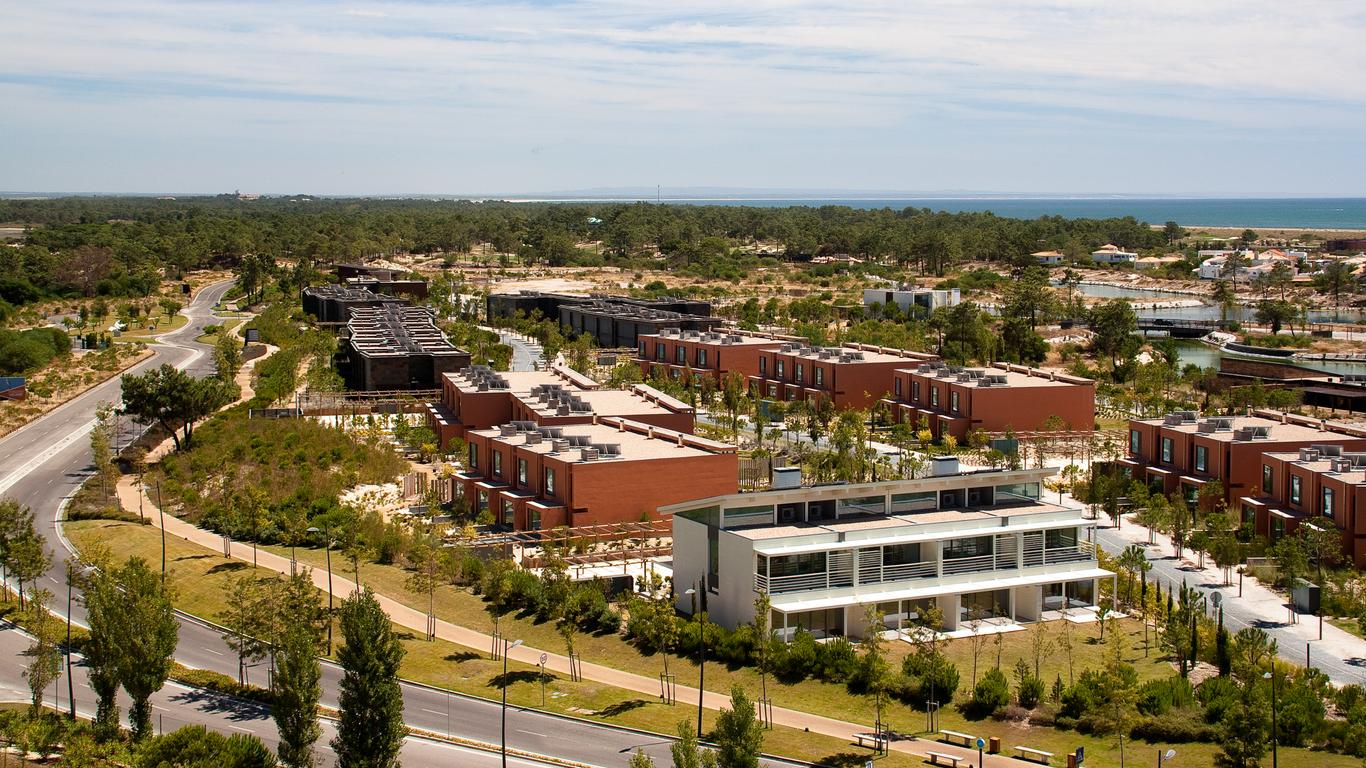Located just across the water from Setubal, Troia is a Portuguese town and peninsula where the Sado River meets the Atlantic Ocean. It’s home to stunning beaches linked by stilted walkways, as well as Roman ruins dating from a centuries-old fish-preserving settlement.
Things to do in Tróia
Facing the sheltered Sado Estuary is the Cetobriga Roman Ruins, which preserves an important fishing and fish-preserving centre. It is believed to have been inhabited until the 5th or 6th century AD when it was engulfed by an earthquake-induced tidal wave. Archaeologists have uncovered the remains of a temple, baths and villas, as well as rectangular fish-salting tanks used to produce garum.
Fringing the Atlantic Ocean side of the Troia Peninsula are a string of white sandy beaches where you can swim and sunbathe in the summer months. Several stretches are patrolled by lifeguards and there are a handful of bars where you can grab drinks and snacks throughout the day. Nestled behind the Praia do Golfe is the 18-hole Troia Golf Championship Course, which has been voted as one of Europe’s best.
A short drive from Troia is the Porto Palafita da Carrasqueira, a historic, stilted wooden pier that has become a popular photography destination at sunset. It lies alongside the Açude da Murta where native and migratory bird species can be spotted. Schools of bottlenose dolphins are also regularly seen in the waters surrounding the Troia Peninsula.
Getting around Tróia
Troia is connected by regular ferries from Setubal, which is around 45 minutes’ drive south of Lisbon. Humberto Delgado Airport is 30 minutes away and has flights to destinations across the globe. Renting a car or bike is the most convenient way of getting around the Troia Peninsula while the town centre and beaches can easily be explored on foot.





